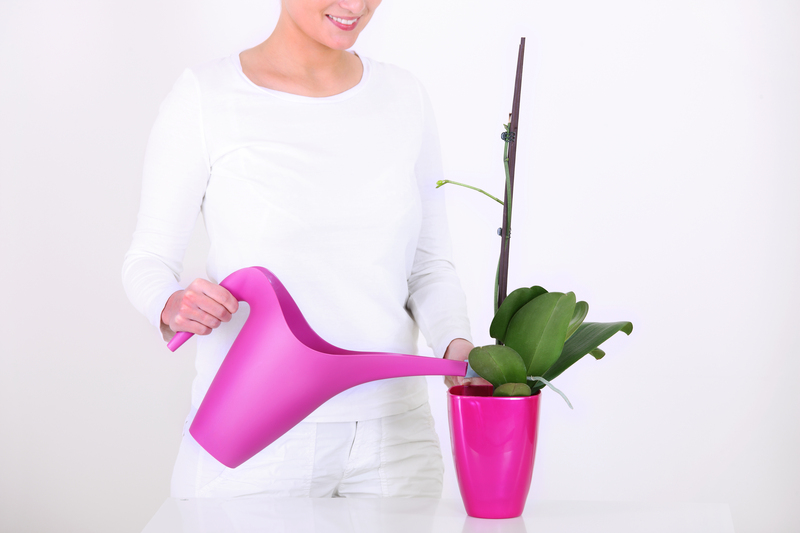DIY Ideas for Building a Living Fence with Hedging Plants
Posted on 18/09/2024

Are you looking for a natural and eco-friendly way to create a fence for your property? Look no further than hedging plants! Not only do they provide privacy and security, but they also add aesthetic appeal to any outdoor space. With the right tools and techniques, you can easily create a living fence using hedging plants. In this article, we will guide you through the steps of building your own living fence with hedging plants, along with some tips, takeaways, and pros and cons to consider.
Selecting the Right Hedging Plants
The first step in building a living fence is choosing the right hedging plants. There are many options available, so it's essential to select ones that are suitable for your climate, soil type, and desired height. Some popular choices include privet, boxwood, yew, holly, and arborvitae. These plants are known for their ability to grow into dense hedges and can be easily pruned to maintain shape and desired height.
Preparing the Site
Once you have selected the hedging plants of your choice, it's time to prepare the site for planting. Start by marking out the perimeter of your fence using stakes and string. This will serve as your guide when digging holes for planting the hedging plants. Make sure to leave enough space between each plant so that they have room to grow. It's also crucial to clear the area of any debris or weeds before planting.
Planting Your Hedging Plants
When it comes to planting hedging plants for a living fence, there are two methods you can use - bare root or potted. Bare root plants are cheaper but require more effort as they need to be planted immediately after purchase. Potted plants are more expensive but offer convenience as you can plant them at any time. Whichever method you choose, make sure to dig holes deep enough so that the plant roots are covered entirely but not too deep that the trunk is buried. It's also essential to water the plants well after planting to help them establish roots.
Pruning and Maintenance
Regular pruning is crucial for maintaining a healthy living fence. It not only helps in shaping the hedge but also promotes growth and denseness. The frequency of pruning will depend on the type of hedging plant you have chosen, but generally, it should be done once or twice a year. Use sharp pruning shears to avoid damaging the plants, and make sure to remove any dead or diseased branches. Additionally, regular watering and fertilizing will keep your hedging plants looking lush and green.
Benefits of a Living Fence with Hedging Plants
Building a living fence using hedging plants has several advantages over traditional fencing methods. Firstly, it's an eco-friendly option as it promotes biodiversity and provides shelter for birds and other small animals. It also acts as a natural sound barrier, reducing noise from neighboring properties. Furthermore, hedging plants can improve air quality by absorbing pollutants and releasing oxygen. They can also increase property value by enhancing curb appeal and adding character to your landscape.
Cons of a Living Fence with Hedging Plants
While there are many benefits to building a living fence with hedging plants, there are also some drawbacks to consider. One disadvantage is that it takes time for the plants to reach full maturity and create a dense barrier. This means that you may have limited privacy until the hedging plants have grown sufficiently. Additionally, maintaining a living fence requires regular upkeep, which can be time-consuming and labor-intensive.
Tips for Building a Living Fence with Hedging Plants
- Choose hedging plants that are suitable for your climate and soil conditions.
- Plant hedging plants close together to create a dense barrier.
- Regularly prune and maintain your hedge to promote growth.
- Consider using a mix of different types of hedging plants for added visual interest.
- Water and fertilize your hedging plants regularly to keep them healthy.
Takeaways
Building a living fence with hedging plants is a cost-effective, eco-friendly, and visually appealing way to create privacy and security for your property. It does, however, require regular maintenance and takes time for the plants to reach full maturity. With proper preparation, planting, and upkeep, you can have a beautiful living fence that will enhance your outdoor space for years to come.
Conclusion
In conclusion, incorporating hedging plants into your DIY living fence project offers numerous benefits for both you and the environment. Not only does it add natural beauty to your landscape, but it also provides privacy, soundproofing, and air purification. When planning your living fence with hedging plants, be sure to select the right plants, prepare the site properly, and maintain it regularly. With these tips in mind, you can create a stunning living fence that will not only enhance your property but also contribute positively to the ecosystem.


